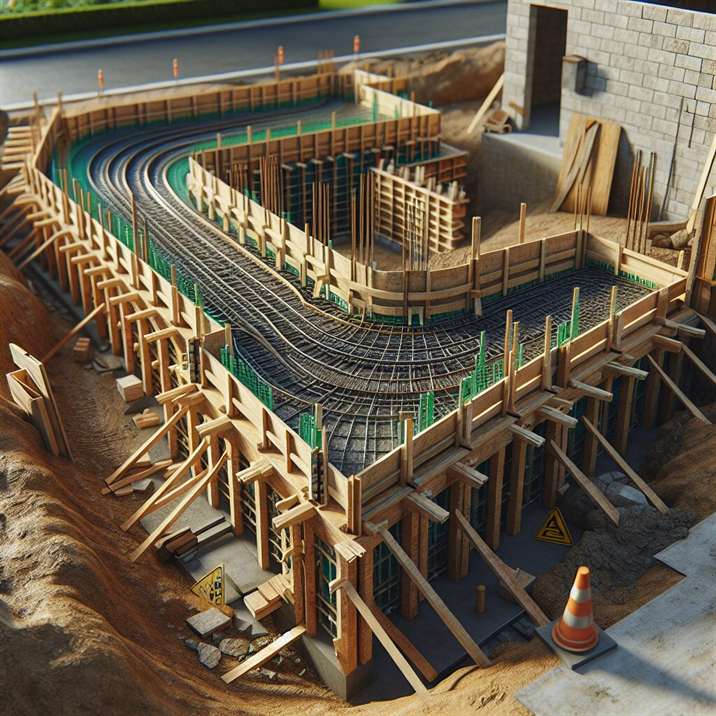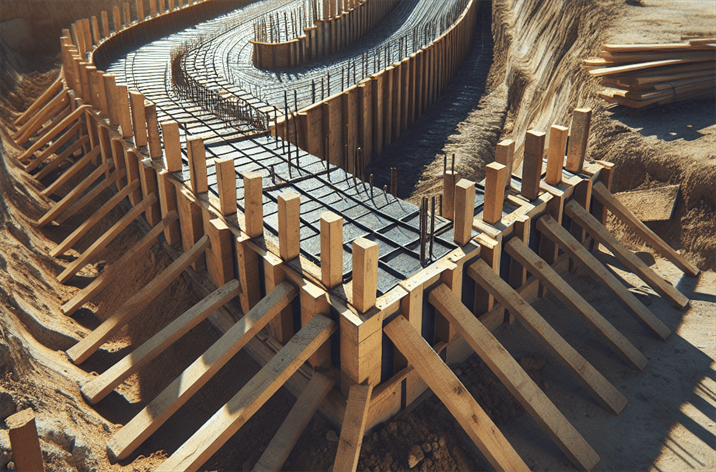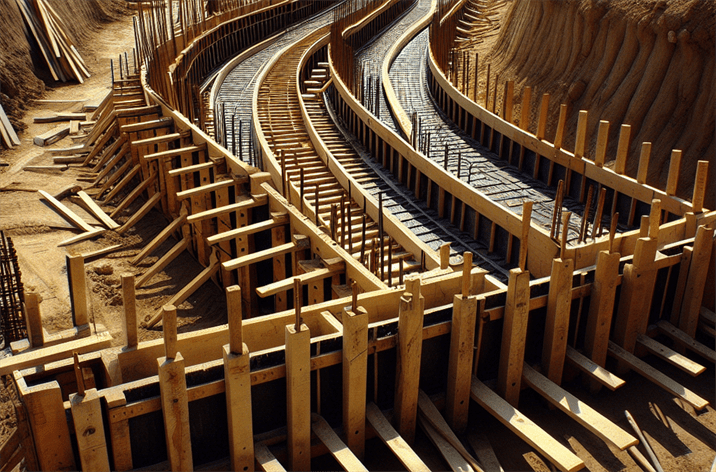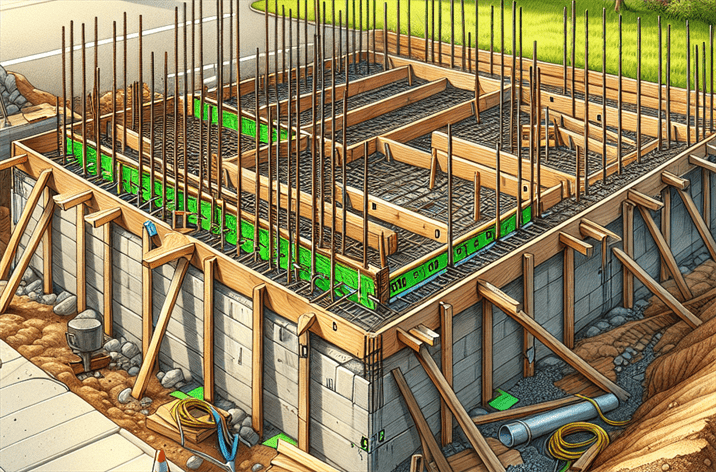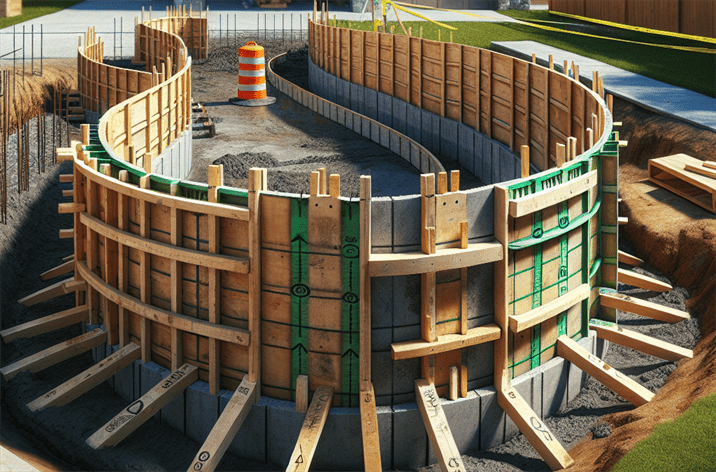Construction Project Markers: The Key to Clear Communication
Introduction
Did you know that effective communication on a construction site can save up to 30% in project costs? It’s a staggering statistic that underscores the importance of construction project markers. These markers serve as a vital tool for conveying information, ensuring that every team member is on the same page. In an industry where precision and clarity are paramount, understanding the role of construction project markers is essential for any construction professional.
The construction industry has seen significant advancements in technology and methodology in recent years, but one element remains unchanged: the necessity for clear visual communication on-site. From staking out boundaries to marking utility lines, construction project markers have become increasingly relevant as projects grow in complexity and scale. New studies highlight their importance in improving workflow, reducing errors, and enhancing safety standards, making them a hot topic among industry leaders and construction teams alike.
In this article, we will explore the various aspects of construction project markers, including their definition, historical context, importance, functionality, types, benefits, and best practices. By the end, you’ll have a comprehensive understanding of how to effectively utilize these markers to enhance communication and efficiency on your construction sites. For insights into construction markers, check out our detailed guide on construction project markers and their benefits.
What are Construction Project Markers?
Definition
Construction project markers are physical markers used to denote specific points, boundaries, and lines on a construction site. They are essential tools for site layout, helping contractors and workers visualize plans and ensure that construction aligns with design specifications. These markers can be made from various materials, including wood, plastic, and metal, and come in different sizes and shapes to suit specific applications.
Historical Context
The use of project markers dates back to ancient civilizations, where builders relied on rudimentary forms of marking to establish boundaries and layout plans. Over time, as construction techniques evolved, so did the materials and methods used for marking. In the 20th century, the introduction of more durable materials and innovative designs transformed the landscape of construction marking, leading to the sophisticated tools we have today.
The Importance of Construction Project Markers
In recent years, the importance of construction project markers has surged. With the rise of complex construction projects, the need for clarity and precision in communication has never been greater. Factors such as regulatory requirements, safety standards, and the demand for sustainability have made effective marking practices crucial.
Construction Project Markers in the Context of Site Management
Site management benefits immensely from the strategic use of construction project markers. These tools help in organizing the site layout, ensuring that every aspect of the project is clearly defined and easily accessible. Properly placed markers can prevent costly mistakes and reduce the risk of accidents, contributing to a safer work environment.
Key Players or Contributors
Several organizations and innovations have significantly influenced the development of construction project markers. Companies specializing in construction supplies have introduced advanced materials that enhance the durability and visibility of markers. Moreover, industry standards and best practices established by professional associations continue to guide the effective use of construction project markers.
For a comprehensive overview, visit our page on Top Construction Project Marker Usage.

How Do Construction Project Markers Work?
The Mechanics of Construction Project Markers
Understanding how construction project markers work involves recognizing their role in the construction process. The following steps outline the typical workflow involving these markers:
- Site Preparation: Before construction begins, the site is prepared, and initial surveys are conducted. This is when the markers are first introduced to indicate boundaries and key reference points.
- Layout Establishment: Using the project plans, construction teams will use markers to outline the layout of the project. This includes setting up the foundation, walls, and any additional structures.
- Communication Tool: Throughout the construction process, markers serve as visual aids to communicate changes and updates to the team. They ensure that everyone is aware of the current status and expectations.
- Quality Control: Markers are used during inspections to verify that construction aligns with the original plans. This step is crucial to maintaining quality and adhering to regulatory standards.
Types of Construction Project Markers
The effectiveness of construction project markers largely depends on their type. Here are some of the most common types used in the industry:
- Wooden Stakes: Traditionally used for layout, they are easy to drive into the ground and can be marked with paint or flags.
- Surveying Flags: Brightly colored flags attached to stakes help indicate boundaries and important points, improving visibility on-site.
- Plastic and Metal Markers: Durable and weather-resistant, these markers are ideal for long-term use. They often feature engraved details for clear communication.
- Painted Lines: While not physical markers, painted lines on the ground serve as effective visual indicators for boundaries and pathways.
Benefits of Using Construction Project Markers
Enhanced Communication
Clear communication is the cornerstone of successful construction projects. Construction project markers facilitate this by providing visual cues that everyone on-site can understand. This reduces the chances of miscommunication and ensures that all team members are aligned with project goals.
Improved Efficiency
By using markers effectively, construction teams can save time and resources. The markers help workers quickly identify where tasks need to be performed, minimizing delays caused by confusion or misinterpretation of plans.
Safety Assurance
Safety is a primary concern in construction. Properly placed markers can alert workers to hazards and delineate areas that require caution. This proactive approach to safety helps to reduce accidents and injuries on-site.
Cost-Effectiveness
Using construction project markers can also lead to significant cost savings. By reducing the risk of errors and streamlining communication, projects are more likely to be completed on time and within budget.
Versatility
Construction project markers can be used for various applications, from defining property lines to marking utility lines. This versatility makes them an invaluable tool for any construction team.
Best Practices for Using Construction Project Markers
To maximize the effectiveness of construction project markers, consider the following best practices:
- Choose the Right Materials: Select markers that are appropriate for the specific conditions of your site. For example, if your site is prone to adverse weather, opt for durable, weather-resistant materials.
- Ensure Visibility: Use brightly colored markers and flags that can be easily seen from a distance. This will help improve communication and reduce the risk of accidents.
- Regularly Update Markers: As the project progresses, ensure that markers are updated to reflect any changes. This will help maintain clarity and prevent miscommunication.
- Train Your Team: Conduct training sessions on the proper use of markers and the importance of clear communication. A well-informed team is more likely to utilize markers effectively.
- Conduct Regular Inspections: Regularly check the positioning and condition of markers to ensure they remain accurate and effective throughout the construction process.
- Document Marker Placement: Keep a record of where markers are placed and any changes made during the project. This documentation can be invaluable for future reference and accountability.
- Utilize Technology: Consider incorporating technology, such as GPS and drones, to enhance the accuracy and efficiency of marker placement and tracking.
- Engage All Stakeholders: Ensure that everyone involved in the project, from contractors to subcontractors, understands the role of markers and their significance in the construction process.
- Promote a Culture of Communication: Foster an environment where open communication is encouraged, and team members feel comfortable discussing any discrepancies or concerns related to markers.
For more detailed insights into how construction project markers enhance communication, visit our page on Improving Project Precision with Marking Stakes.
Future Trends in Construction Project Markers
As technology continues to evolve, so too do the tools and methods used in construction. Here are some trends to watch in the realm of construction project markers:
Smart Markers
The future may see the introduction of smart markers equipped with sensors that provide real-time data about their position and condition. This technology could enhance accuracy and efficiency in construction projects.
Eco-Friendly Materials
With sustainability becoming a priority in construction, the demand for eco-friendly materials for markers is likely to grow. Companies are exploring biodegradable and recyclable options that maintain durability without harming the environment.
Integration with BIM
Building Information Modeling (BIM) is transforming the construction industry. The integration of construction project markers with BIM systems could streamline communication and improve project outcomes by providing a digital representation of markers and their functions.
Enhanced Visibility Technologies
Advancements in visibility technologies, such as augmented reality, may offer new ways to visualize project markers on-site, improving communication and efficiency for construction teams.
Conclusion
In the fast-paced world of construction, effective communication is paramount. Construction project markers serve as essential tools for achieving clarity and precision on-site, ultimately leading to successful project outcomes. By understanding their role and implementing best practices, construction teams can enhance communication, improve efficiency, and ensure safety.
As we look to the future, the continued evolution of construction project markers promises exciting advancements that will further improve how we approach construction projects. Embracing these changes while adhering to best practices will keep your projects on track and set you apart in a competitive industry.
For more information on how to optimize your construction project communication, explore our guide on Effective Communication in Construction Projects.
Resource Links:
1. ConstructConnect – An overview of how construction project markers enhance communication and project management efficiency.
2. ProjectManager – Discusses the importance of visual project markers in ensuring clarity and coordination on construction sites.
3. The Balance Careers – Explores various communication tools in construction, highlighting the role of markers in effective project execution.

